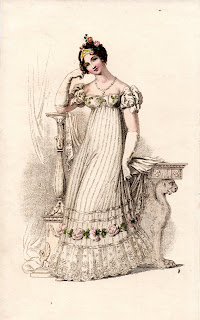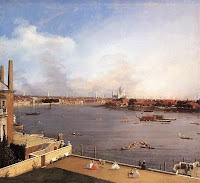I finished the Marquess and Governess story on time (Yay, me!) , after a marathon of writing, and I’ve now caught up on my Downton Abbey.
While I was in my flurry of writing, I distracted myself by thinking of what I’d do to reward myself. I have several plans. Like get my hair cut (finally!!). Buy some new make-up. Go to Old Town Alexandria to this terrific little tea shop there.
I turned the book in on Friday and on Saturday I did have a little reward. I attended an all day seminar at the Smithsonian called Regency England’s Pleasures and Paradoxes presented by Lorella Brocklesby, an adjunct professor at New York University.
She took a look at the architecture of Regency England, the development of Regent Street, Regent’s Park, the Pavilion, and Carlton House, as well as a few other places. She talked a little about artists Turner and Benjamin West, and caricaturists like Gillray. She touched on some of the paradoxes, such as child labor.
The session was sold out, a couple hundred people, maybe. The speaker was charming and the audience seemed to enjoy the whole thing, but for a Regency Romance author, it just didn’t work for me.
For one thing, she defined the Regency in very broad terms, from 1750 to 1838. That would be okay, but she skipped around a lot in those dates, so, if you didn’t know beforehand, you would know exactly what happened when.
She also was imprecise in her facts. For example, she spoke about Harriette Wilson, mentioning her book, but neglected to say she was a famous courtesan. She also talked about Jane Austen, but got her facts wrong. She said Austen never dedicated a book to the Prince Regent, but, of course, she did.
Austen’s dedication to the Prince Regent in Emma was brilliant:
To His Royal Highness, the Prince Regent, this work is, by His Royal Highness’s permission, most respectfully dedicated, by His Royal Highness’s dutiful and obedient humble servant, the author.
Those are just a few of the examples.
Most Historical authors like to deal with precision–What exactly would they have eaten? What exactly happened in May of 1816?–so this seminar was frustrating in its imprecision.
Still, there were good parts. I went with my friend Mary Blayney, and we met my friend Virginia there. We had great conversation at lunch at the Natural History museum, so the day was not a total flop.
So, what do you reward yourself with after a period of hard work? And what was the most disappointing thing you’ve attended?






